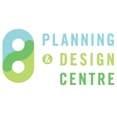It’s More Than Buses Update
Tuesday, October 29th, 2013
“Public transportation must progress into a whole new level of public acceptability by making its use vastly more convenient and with much improved levels of service. This Plan aspires to make transit use a universally acceptable and accessible means of transportation.”
Regional Council endorsed this bold vision for transit in 2009 in the Downtown Halifax Municipal Planning Strategy (DHMPS). The Regional Municipal Planning Strategy (Regional Plan) also commits to focusing growth in transit-oriented neighbourhoods connected by a multi-modal transportation system.
Only by providing high-quality transit can we create a city of corridors and nodes where transit supports vibrant and sustainable communities. It’s More Than Buses (IMTB) is committed to creating a high-quality transit system, based on our Essential Elements of High-Quality Public Transit, developed by hundreds of citizens at three public forums.
Check out IMTB’s ESSENTIAL ELEMENTS OF HIGH-QUALITY PUBLIC TRANSIT
There is a dramatic opportunity to redesign Halifax’s transit system to achieve this vision. IMTB is advocating for a high-frequency transit network as the foundation for a strong regional transit system. Such a network would make transit a good transportation choice for many more HRM commuters.
There are four main reasons to redesign the region’s transit system:
A - Growing City
The city has expanded dramatically since World War II, but many routes are still based on old streetcar lines. Even newer suburban routes are outdated, because the route pattern is a radial network providing direct service from most neighbourhoods to downtown. A network of high-frequency corridors and easy transfers is a better way to move people in dense urban areas.
The transit system must also respond to demand from major economic drivers, such as the Irving shipbuilding contract. We know that large employers – including Dalhousie University and the Canadian Navy – already have huge parking and transportation problems. A better transit system would help thousands of workers.
B - New Support for Transit
Council has significantly increased financial support for transit. Metro Transit’s budget grew by 42% to $101 million between 2010/11 and 2012/13. There has also been broad political support for new terminals, a new transit garage and most recently a new harbour ferry. Institutional support has also increased, especially with the introduction of the U-Pass.
C - Declining Performance
Network performance is declining. The average cost to transport each rider increased from $3.04 in 2009/2010 to $4.03 in 2012/2013. Fare-box recovery has fallen from 52% in 2010/2011 to 40% at present. Customer satisfaction dropped from 73% to 60% in just two years. A complete rethink of the network is needed to address these issues.
D - Overlapping Routes
There is lots of waste in the network. Many routes overlap and buses often bunch or ‘caravan’ followed by long gaps in service. Re-allocating existing resources more effectively through a network redesign is the only way to solve these problems.
We have clearly outlined why the need for a complete redesign of Metro Transit’s network. It’s More than Buses has worked for several years to improve transit in HRM. We’ve talked to hundreds of residents. We have consistently heard the same transit needs: fast, frequent, reliable and comfortable service. Our goal is to ensure Metro Transit completes a full redesign of its bus network as part of its five-year service plan. We will continue to speak with local and international experts on how to best meet HRM’s transit needs. Based on the experiences of other cities, five years is more than enough time to redesign our bus network. Let’s get moving!

